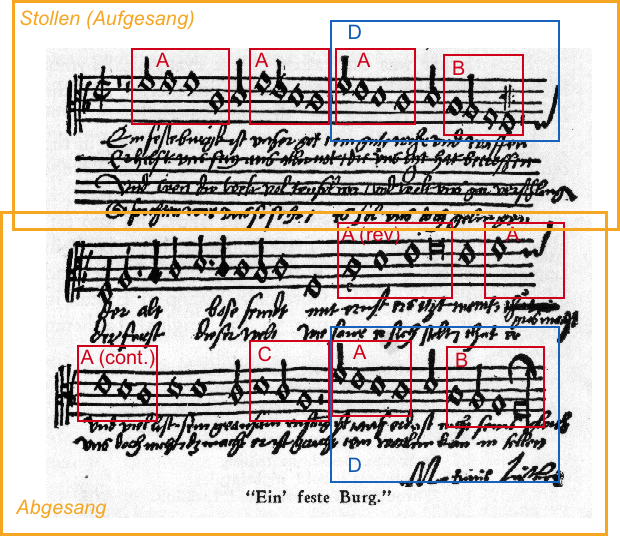A few years ago there was a bit of a controversy that broke out of the academic music theory chicken coop and ran around in the eye-of-the-public’s yard. This was magnified a bit by a YouTube video by one popular musician-slash-YouTuber named Adam Neely. The controversy resulted in a major university (University of North Texas) investigating a distinguished professor for alleged racism, an ensuing defamation lawsuit by the professor, and the attention of FIRE (Foundation for Individual Rights in Education). It couldn’t be more exciting for the otherwise invisible U.S. classical music theory community. The only thing missing is Donald Trump (although he does get a mention in the academic paper that started it all). The controversy has escaped the chicken coop again thanks to a recent publication of a book by Philip Ewell, author of the original paper at a meeting of the Society for Music Theory in 2019, and a reaction to the book by linguist John McWhorter, who waded into the fray on the opinion pages of the New York Times.
I’ve been kind of following this thing now for a couple of years. I don’t pay much attention to academic music theory discussions or articles any more – as if I ever did. My relationship to music theory of late has been more mundane, primarily incorporating basic musicianship and theory skills in my private piano teaching. But this relatively new blip on the musical radar has created enough of a stir in my still-functioning heart that I think I can justify dusting off some of my old theory books from the distant past (books which are ultimately destined to life on a shelf in some obscure used bookstore, in the best case scenario, an inevitable consequence of our current attempts to downsize), looking up some articles online, and even giving/taking a few pokes in the Twitter/Facebook music theory culture wars, kind of like a kid who would love to get into the ring with whomever is the current Hulk Hogan, but has to be content with throwing spitballs at the television screen.
During my time on the sidelines, I have come to realize that a couple of questions arise like stubborn weeds in my somewhat foggy and not-so-fertile garden of a brain. Why did Heinrich Schenker become the central figure in this argument? And why has non-Schenkerian theory (presumably a bit more representative of the work of the mainstream musico-theoretical cognoscenti these days), been glossed over or ignored in the process? This odd tilt to the discussion is a bit of a head scratcher for me, if not totally bewildering.
Why Schenker?
In an effort to convince his colleagues that the use of a “White Racial Frame” could be a useful device for determining a way forward for the study of music theory in higher education in the U.S., Ewell focuses his attention on the early twentieth century Austrian theorist Heinrich Schenker. This initially seemed odd to me, even given Schenker’s obviously obnoxious views about race, among other things (Ewell’s paper documents them extensively). It’s not as if every music student in the world who has taken a course in Schenkerian analysis would not already know at least a little bit about these views. It’s kind of a big “so what?”
Ewell’s assertion that Schenker has been elevated to a reverential pedestal, analogous to an unquestioned reverence for Beethoven, also seemed odd, this being the 21st century and all. Ewell states in the paper: “If Beethoven is our exemplar of a music composer, Schenker is our exemplar of a music theorist.” Really? In what contemporary, 21st-century music theory world is that true? Although influential, Schenker’s ideas also met with a fair amount of resistance in the academy (“There is no denying that, for many, Schenker remains even today a sort of musical aberration, an outsider to be looked upon with suspicion if not fear.” Morgan, 1978), and if it weren’t for strong support and interest from influential theorists such as Allen Forte at Yale, his ideas probably would not have gained as much acceptance or influence. Nowadays, his theories, or perhaps more accurately his analytical procedures, have found a comfortable place in many institutions of higher musical education as a kind of de rigueur requirement for graduation (somebody correct me if I’m wrong). But that doesn’t mean that music theorists pay much attention to Schenker or take his musical views seriously any more, other than The Schenkerians, that mighty group of musical nemeses whose journal just got cancelled by the mob.
My academic experience with Schenkerian analysis, which at first involved trying to figure out what in the world was going on, and then gradually getting the hang of creating reductive analytical graphs for short pieces by composers like Mozart and Chopin, seemed like a rather abstract exercise not unlike working out species counterpoint exercises or four-part chorale harmonizations. There’s a certain discipline to it that helps form a concept of tonal motion, so it has pedagogical value. From a performer’s point of view, that way of looking at things helps you recognize relatively large-scale linear patterns in a lot of common-practice-era compositions – but I wouldn’t seriously consider it as a comprehensive theory encompassing everything there is to know about tonal music. I remember a lot of pushback and arguing about the theoretical part (Ursatz, Urlinie, diminution, reduction from fore- to middle- to background, that kind of thing) by the theory and composition students in the class – most of whom were probably creating electronic or aleatoric stuff at the time, and were probably much more interested in procedures suggested by contemporary composers than stuffy and rigid theories by a non-composing Austrian theorist. I don’t remember any students taking the theory in its totality very seriously. That’s not to say that some very interesting musical writings about music were not influenced to some extent by Schenker – Charles Rosen claimed such an influence in The Classical Style, for example. But Schenker’s ideas were just part of the mix, and were important or not depending on who your theory teacher was, and what type of music you were studying, performing, or creating.
I think Ewell’s hyperbolic overstatement of Schenker’s importance can be traced to a few simple facts. First, Ewell’s own educational background includes a strong Schenkerian emphasis. He studied theory under Carl Schachter at Queens College CUNY. You can’t get more Schenkerian than Schachter, who studied with Felix Salzer, who in turn had been a student of Schenker in Vienna. Additionally, Ewell earned his PhD at Yale under Allen Forte’s direction. Forte, best known for his development of a set-theoretic approach for studying atonal music (particularly serialism), also published a number of Schenkerian articles and analyses. For example, the introductory chapter to one of the dusty old books I pulled off the shelf (Readings in Schenker Analysis and Other Approaches, ed. Yeston, 1977) was authored by Forte. It would be difficult, given that background, not to view Schenker and his ideas as very important in the theory world. Interestingly, Schachter gets a bit of a pass in Ewell’s 2020 paper. “To my knowledge, the first English-language author to call out Schenker’s racism, and to use that term specifically, was Carl Schachter.” Or earlier, in his discussion of racism in music theory textbooks: “all textbooks that I examined, with the exception of the Aldwell and Schachter . . . featured at least one example by Stephen Foster . . .”
Second, Schenker, given his overtly racist views and attempts to marry his ideology to his practice, is an easy target if you are building a case for the over-arching dominance of the “White Racial Frame” of western music theory.
But then one wonders why more of Forte’s work on Schoenberg and atonality is ignored by Ewell in his paper. Is Schenker really the only exemplar of what a western music theorist is or should be? If Schoenberg developed his dodecaphonic procedures early in the century, and Forte was developing his theories about atonal music later, why is this not also an important strand of western music theory? It is just as western and “white” as Schenker’s. The obvious problem for Ewell is that it would be much more difficult to draw any kind of supposed parallel between Schoenberg’s views on music and any possible racist views he might have held, even if Ewell is right that “Hugo Riemann, Arnold Schoenberg, Anton Webern, and many others on whose theories we rely all believed in German – and almost certainly white – superiority.” [Side note to any of the nitpickers who have taken Dr. McWhorter to task for the unpardonable sin of conflating the terms “musicology” and “music theory” – Schoenberg did not take kindly to those who considered him a mere theorist]. I won’t ask what happened to Nadia Boulanger or Pierre Boulez (French influence doesn’t count, I guess), but the point here is that, at least in the cases of Schoenberg and Webern, it would be nearly impossible to connect an alleged hierarchical view of human beings, which places white Germans at the top, to their musical practice, either compositional or theoretical. “Emancipation of the dissonance” sounds too much like “equity and inclusion” to gain much traction as support for an argument claiming systemic racism is baked into western music theory.
Why Ignore Current Music Theory?
Dr. Ewell can conveniently ignore current music theory scholarship because it is completely irrelevant to his point, and his point is irrelevant to current music theorists (at least most of them). It is irrelevant because modern music theory scholarship has moved far beyond Schenker. One need only peruse the titles of recent volumes of Music Theory Online (a peer-reviewed journal of the Society for Music Theory) to get a feel for current interests. “The Common Cold: Using Computational Musicology to Define the Winter Topic in Video Game Music” sounds like perfect post-COVID reading for music nerds (especially the ones that play video games in the basement), but hardly a demonstration of the inevitability of White Supremacy in western classical music from the common practice period. It is also irrelevant because frankly, people outside of music theory circles don’t know, and don’t care.
If Dr. Ewell wants to present a provocative paper on systemic racism in traditional western tonal music theory, that’s apparently fine with theorists (except for the Schenkerian remnant, of course). They don’t have a whole lot of skin in the game. They can focus on video games and computational musicology, or “The Techne of YouTube Performance“, or “Rhythmic Techniques in Deaf Hip Hop.” So many interesting and urgent topics to explore – who has time for Schenker? Signing on to a letter condemning a Schenkerian theorist and his journal for supposedly defending and propagating white supremacy and racism provides a bit of additional career insurance. [Addendum: the US theorists’ letter is counter-balanced by this letter from primarily European theorists.] By the way, Ewell’s work has apparently given some people, who really should know better, the impression that Schenkerian theory is *the* dominant theory for today’s theorists. If this is the case, why would they all rise to Ewell’s defense in the NTU scrape, and not worry a bit that the Journal of the Most Important Theorist of All Time now sits on the ash heap of forgotten memories?
I give Professor Ewell credit for creating his own success in a world that is otherwise indifferent to classical music, and not only indifferent to but completely ignorant of classical music theory. His timing for the paper could not have been better. He gains credibility as an anti-racist by refusing to engage with his Schenkerian critics, but simultaneously keeps his Schenkerian credentials; he has stated that he intends to keep teaching Schenkerian analysis. It has pedagogical value for teaching about tonal music, apparently, even if it is shot through with racist ideology. And 2.3 million views on YouTube cannot hurt. That can only be good for book sales.


